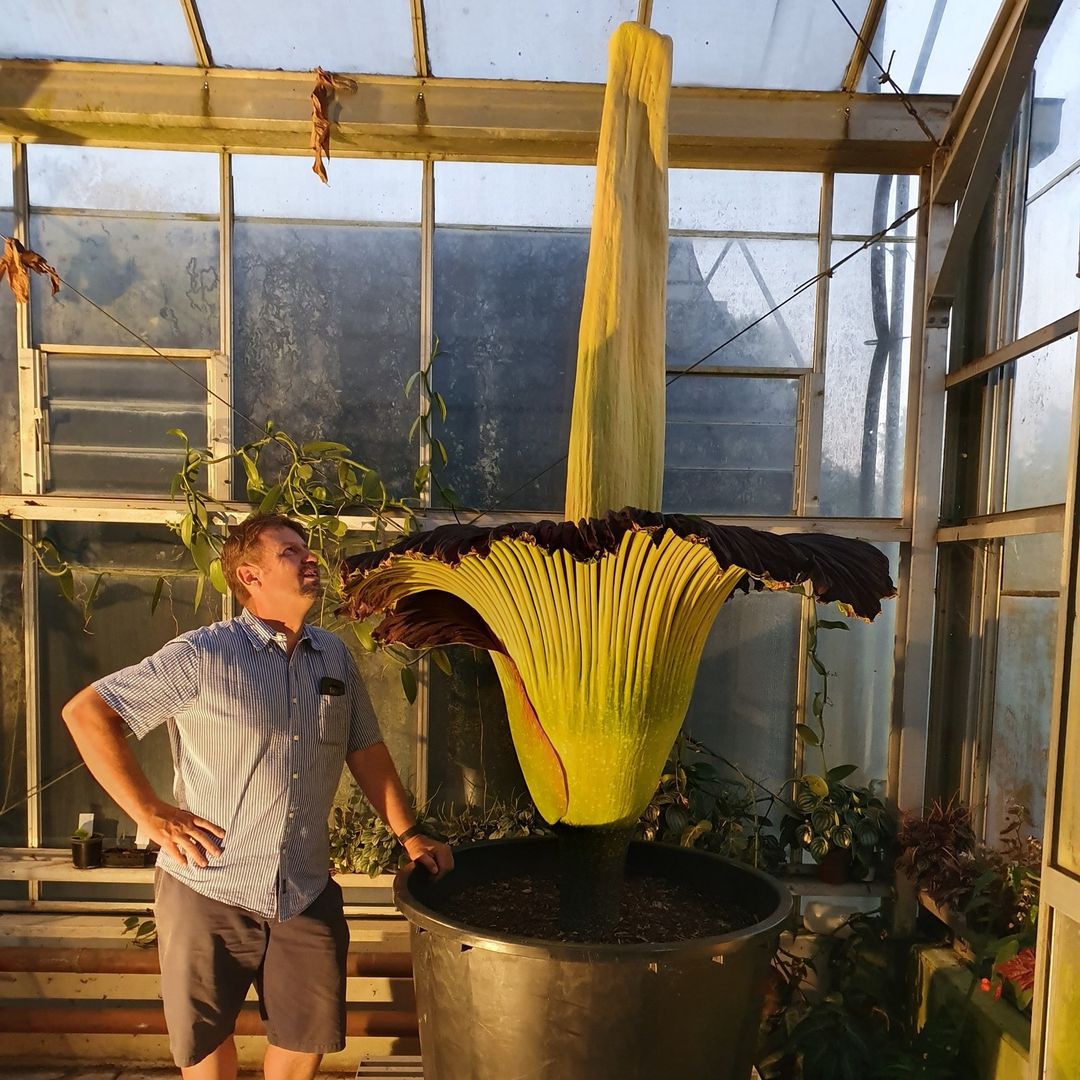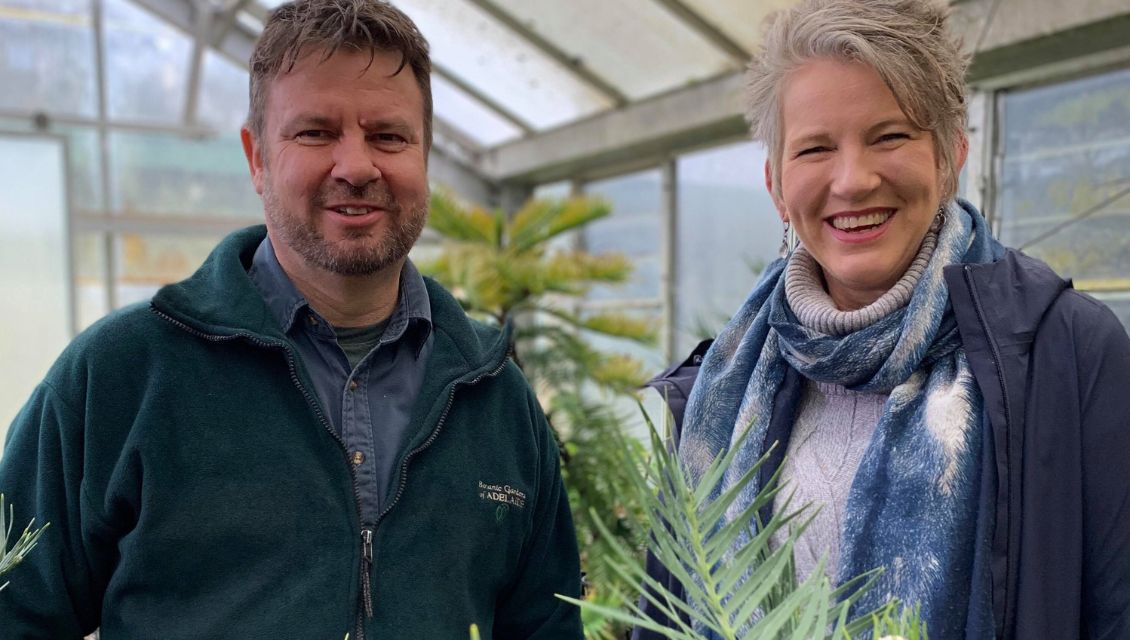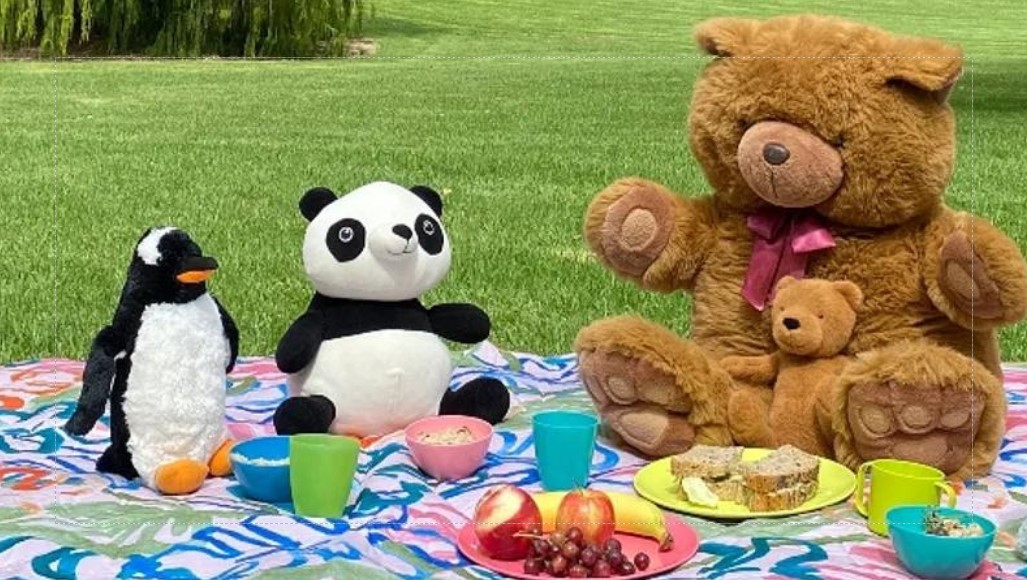
As a kid, Matt Coulter loved nothing more than growing vegetables.
That love of gardening blossomed into a full-time career working with plants, although as Matt explains “work” might not be the quite the right word.
“I just love my job,” Matt says of his role as Senior Horticultural Curator, Nursery with Botanic Gardens and State Herbarium of South Australia.
“When I go on holidays, I can’t wait to get back to work. I feel really privileged and lucky to be able to work at the Gardens. You get to work with some incredible plants and every day you’re doing something different.”
Based at Mt Lofty Botanic Garden, which along with Adelaide and Wittunga makes up the three botanic gardens in the Adelaide region, Matt completed a Bachelor of Science and Urban Horticulture and an Associate Diploma of Applied Science before working for 24 years in private industry as a horticulturalist.
Sixteen years ago, he started work with Botanic Gardens and State Herbarium of South Australia, a job he says lets him work with both interesting people and, most importantly, interesting plants.
“My main role in this position is to work across the three gardens and work with the curators that look after the sections within the garden,” he says.
“They will give us propagation requests for the plants that they want to be propagated. I’ll collect seeds or cuttings or whatever is needed and work out how we can propagate those plants to get them into the garden. I’ll also curate different collections.”
One of the collections that Matt has been deeply involved with is the garden’s collection of Amorphophallus titanum, the gigantic flower native to the Indonesian island of Sumatra that emits the smell of rotting flesh.
It’s this peculiar trait that has earned it the nickname of the corpse flower, and it’s also this trait that sees queues of curious gardening fans stretching for hundreds of metres to catch a glimpse on the rare occasions that it flowers.
The endangered plant is cultivated by botanic gardens around the world, but a technique perfected by Matt means Adelaide’s collection is one of the biggest.
“Back in 2013 I decided to set up a propagation trial to see whether I could produce the plant by leaf cuttings,” Matt, pictured right with gardening celebrity Sophie Thomson, says.
“And it was actually incredibly successful. So now our collection probably exceeds 100 plants, after starting out with three seeds.”
The corpse flower is the rock star of Adelaide’s Botanic Garden, and Matt says it gives him a lot of satisfaction to see people who may have never stepped foot on the grounds lining up for a glimpse.
“You talk to people as they come in and they tell you they’ve never been to the garden before, and they’re waiting in line for two-and-a-half or three hours just to see the plant,” he says.
“I think that’s one of the things I’m most proud of.”
But helping to keep the endangered corpse flower growing is not the only work Matt does with a conservation bent – he also helps to keep our native fauna safe.
“We work with the Seed Conservation Centre in South Australia, concentrating on our own threatened fauna,” he says.
“We help with propagation so that these plants can be put back into natural distribution.”
Matt says he loves all of Adelaide’s botanic gardens, but if he had to choose just one it would be his “office” garden at Mt Lofty.
“I do have a soft spot for Mt Lofty,” he says.
“I think because it's such a seasonal garden and you see so many changes over time. When it's autumn here it’s quite an incredible, spectacular thing to see. And then there’s the spring blossoms and the winter mornings when it’s so foggy that you can’t see five metres in front of you. I love it.”
Matt says anyone looking to go down a similar path to his should consider applying for one of the Gardens' three-year trainee programs.
“You work full time with the Gardens and you get one day a week with TafeSA and come out with a Certificate 3 in Horticulture,” he says.
“Some go on to start their own garden businesses, some go to work for councils and many of our full-time staff have come through the traineeship program.”


